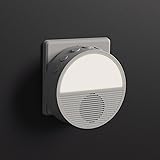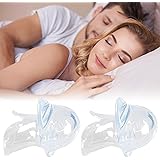Mastering the Ultralight Camping Sleep System for Side Sleepers
Achieving truly restful sleep in the backcountry, especially for side sleepers, is entirely possible with a thoughtfully curated sleep system. As eloquently described in the video above, a superior night’s rest can transform the outdoor experience, offering warmth, comfort, and restorative sleep even in challenging conditions. The profound impact of appropriate gear on wilderness comfort cannot be overstated, particularly when addressing specific sleeping preferences.
For many outdoor enthusiasts, the primary concern revolves around shedding weight from their packs. Consequently, comfort often becomes a secondary consideration. However, an optimized **ultralight camping sleep system for side sleepers** proves that comfort does not necessarily have to be sacrificed at the altar of minimal weight. Careful selection of each component allows for the delicate balance required to enjoy both a lighter pack and a deeper slumber.
The Indispensable Role of an Advanced Sleeping Pad
A crucial element in any effective sleep system is the sleeping pad, which provides both insulation and cushioning from the ground. As was observed in the video, the significant heat loss that occurs through direct contact with the cold ground is often underestimated. Therefore, a winter-specific or highly insulated sleeping pad is considered essential for maintaining body temperature in cooler environments.
The insulating capacity of a sleeping pad is quantified by its R-value, which measures its resistance to heat flow. Higher R-values indicate greater insulation, making them suitable for colder temperatures. For winter camping, an R-value of 4.0 or higher is generally recommended, thereby minimizing the transfer of cold from the ground to the sleeper. Furthermore, the thickness of a sleeping pad is of paramount importance for side sleepers.
It is generally acknowledged that side sleepers benefit significantly from pads that are three inches thick or more. This generous loft ensures that hips and shoulders do not “bottom out” against the hard ground, which can lead to discomfort and pressure points. Such ample cushioning facilitates proper spinal alignment throughout the night, contributing to a more restorative sleep experience. Various construction methods, including vertical or horizontal baffling and different internal insulation materials, are utilized to achieve optimal thermal performance and structural integrity in these specialized pads.
Integrated Pillow Systems: Elevating Backcountry Comfort
Another often overlooked component of an effective sleep system is a dedicated camping pillow. As noted in the accompanying video, the use of an integrated or attachable pillow system can dramatically enhance comfort. The clever integration of features, such as Velcro tabs that secure the pillow to the sleeping pad, prevents it from migrating during the night. This stability is invaluable, especially for restless side sleepers who might otherwise find their pillow slipping away.
Traditional makeshift pillows, often consisting of bunched-up clothing, rarely provide adequate neck support or consistent loft. An engineered camp pillow, whether inflatable or made from compressible foam, offers superior ergonomic support. This ensures that the head and neck are properly aligned with the spine, thereby mitigating the risk of stiffness and discomfort upon waking. The thoughtful design of these systems significantly contributes to overall sleep quality in the backcountry.
Beyond the Pad and Pillow: A Holistic Sleep Approach
While the sleeping pad and pillow are foundational, a comprehensive sleep system for ultralight camping involves several other integrated components. The choice of sleeping bag or quilt, for instance, must complement the sleeping pad’s R-value and be appropriate for the expected ambient temperatures. For side sleepers, a wider cut or quilt design can offer more freedom of movement, preventing a feeling of constriction that can disrupt sleep.
Moreover, a durable ground cloth or tent footprint protects the sleeping pad from punctures and abrasions, extending its lifespan and maintaining its insulating properties. Even the layers of clothing worn to bed, known as base layers, contribute to the system’s overall thermal regulation. Selecting moisture-wicking and insulated base layers can significantly enhance warmth and comfort, working in concert with the sleeping bag and pad.
Balancing Performance and Portability
The pursuit of an **ultralight camping sleep system for side sleepers** inevitably involves strategic trade-offs between weight, packability, and performance. Modern advancements in material science and design have allowed manufacturers to create gear that offers impressive warmth-to-weight ratios and compact packed sizes. Consequently, it is no longer necessary to endure uncomfortable nights in order to achieve an ultralight pack.
Careful consideration should be given to the overall weight of each component versus its contribution to comfort and warmth. An investment in a high-quality, specialized sleeping pad and pillow designed for side sleepers can be seen as an investment in energy and well-being, directly impacting performance and enjoyment on long treks. Ultimately, the objective is to create a synergy among all elements of the sleep system to maximize comfort without unduly burdening the pack.
For side sleepers embarking on backcountry adventures, especially those requiring an **ultralight camping sleep system for side sleepers**, prioritizing a high R-value sleeping pad of sufficient thickness and an integrated pillow is critical. These components collectively ensure warmth, prevent pressure points, and promote healthy spinal alignment. Such a meticulously chosen system directly contributes to a more enjoyable and safer wilderness experience.








